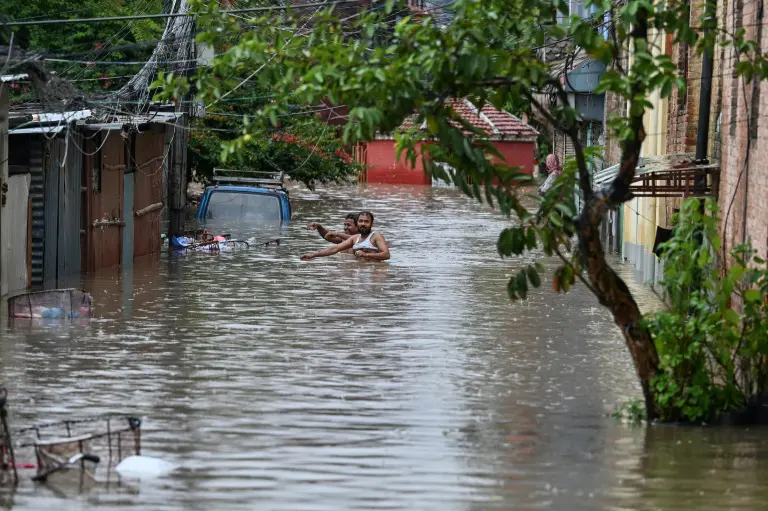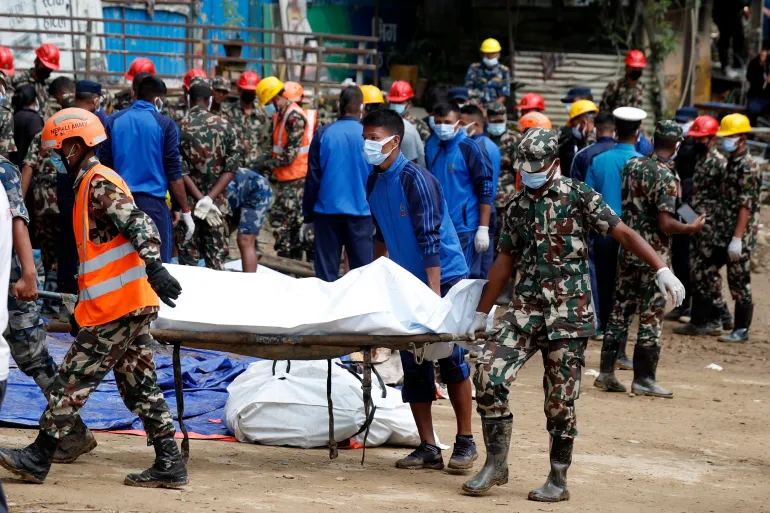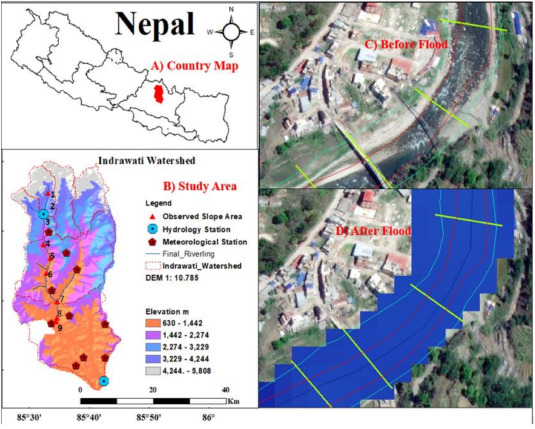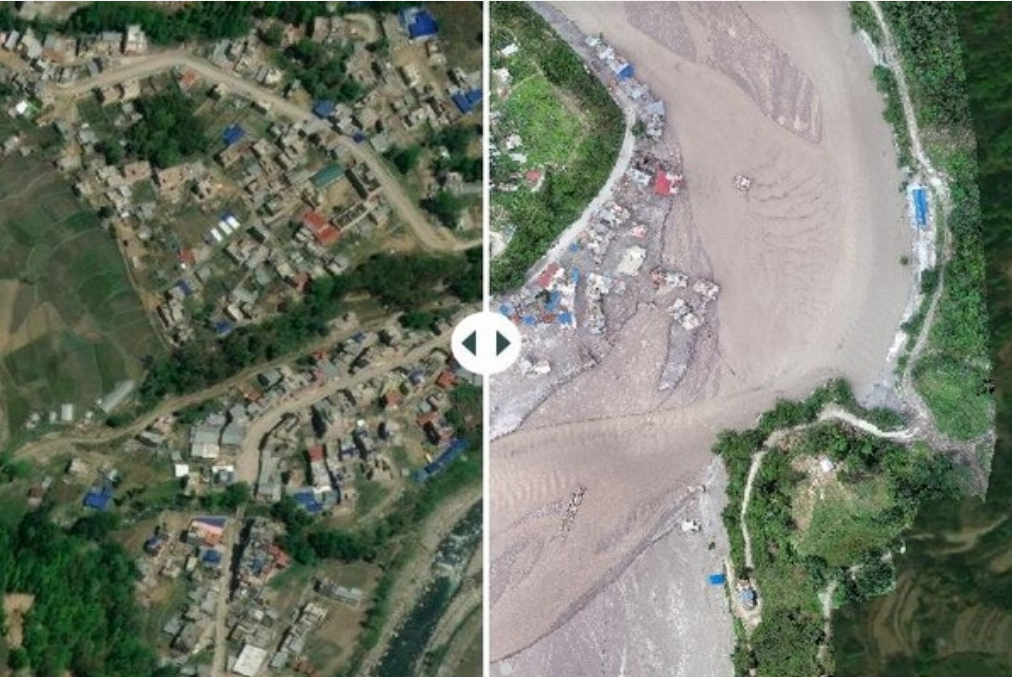In September 2024, Nepal Floods have resulted in devastating consequences for both lives and the economy. This catastrophic event was marked by deadly record rainfall, which overwhelmed the country’s infrastructure and led to significant human suffering. Thousands have been displaced, with many losing their lives, homes, and livelihoods in this natural disaster. Understanding the scale of the impact is crucial for assessing the immediate needs of affected communities and the long-term implications for Nepal’s economy.
Causes of the Flooding
The Causes of the Flooding in Nepal can be attributed to a combination of factors, including geographical vulnerability and recent weather patterns. The country experiences monsoonal rains every year; however, the intensity and duration of the rainfall in 2024 have reached unprecedented levels. Meteorological data indicates that the monsoon season has been exacerbated by the climate crisis, resulting in heavier downpours and increased flash flooding. Urban areas, particularly Kathmandu, faced severe drainage challenges, contributing to the widespread flooding.

Casualties Report: A Humanitarian Crisis
The casualty figures from the Nepal Floods of 2024 are alarming. As of late September, at least 193 lives have been lost, and many individuals remain missing. Rescue teams are tirelessly working to locate the missing persons, but rising waters and unstable conditions hinder their efforts. The humanitarian crisis extends beyond fatalities, as countless individuals have sustained injuries and require medical attention. The emotional toll on families and communities cannot be understated, as they grapple with the loss of loved ones and the destruction of their homes.

Regional Impact: Focus on Affected Areas
The regional impact of the floods has been particularly severe in urban centers and rural communities alike. Kathmandu, the capital, has seen significant flooding, resulting in disrupted transportation and access to essential services. Other regions, such as Sindhupalchowk and Rasuwa, have also faced devastating effects, including landslides that have blocked roads and cut off access to aid. The destruction of infrastructure has left many areas isolated, complicating rescue and relief operations.

Infrastructure Damage Assessment
An assessment of the infrastructure damage reveals the extent of destruction caused by the floods. Roads, bridges, and public buildings have suffered extensive damage, necessitating immediate repairs. Thousands of homes have been rendered uninhabitable, and the cost of rebuilding is projected to be in the billions. Essential services, such as electricity and clean water supply, have been disrupted, further exacerbating the suffering of affected populations. This infrastructure damage poses long-term challenges for recovery efforts, requiring significant investment and planning.

Economic Consequences for Nepal’s Economy
The economic consequences of the Nepal Floods are profound and far-reaching. Local businesses have been severely impacted, with many forced to close due to flooding or damage to their properties. The agricultural sector, a crucial component of the economy, has also been hit hard, as fields have been submerged and livestock lost. As the country grapples with the aftermath, the economic stability of Nepal is at risk, and inflationary pressures may increase due to supply shortages. The need for financial aid and support from both domestic and international communities is critical to aid recovery efforts.
Government Response and Relief Efforts
In response to the crisis, the government has mobilized resources and initiated relief efforts. Emergency services are working around the clock to assist those affected by the floods. Relief supplies, including food, water, and medical aid, are being distributed to the hardest-hit areas. However, challenges remain, including logistical difficulties and the need for coordinated efforts among various agencies. The government’s response is crucial for mitigating the effects of the disaster and ensuring that vulnerable populations receive the assistance they need.
Community Resilience and Volunteer Efforts
In the face of adversity, community resilience has shone through, with many individuals and organizations stepping up to help those in need. Volunteer efforts have emerged, providing immediate relief and support to affected families. Local organizations are coordinating with national and international agencies to ensure that aid reaches those who require it most. This spirit of community support is vital in times of crisis and illustrates the strength and solidarity of the Nepali people.
Long-term Recovery Strategies
Looking ahead, long-term recovery strategies must be established to rebuild communities and infrastructure. This includes not only repairing damaged buildings but also enhancing the resilience of structures to withstand future disasters. Sustainable development practices must be integrated into recovery efforts to ensure that communities are better prepared for climate-related challenges in the future. Government and stakeholders must collaborate to create comprehensive plans that address both immediate and long-term needs.
Climate Change: A Growing Threat
The climate crisis is a critical factor that cannot be overlooked in this situation. The increasing frequency and intensity of weather events raise questions about Nepal’s preparedness for future disasters. As global temperatures continue to rise, the region is likely to experience more severe floods, landslides, and other climate-related phenomena. Policymakers must address climate change proactively, implementing measures that mitigate its impacts and promote sustainable practices.
Comparative Analysis with Previous Flood Events
A comparative analysis of the Nepal Floods with previous flood events reveals alarming trends. While flooding is not uncommon in Nepal, the scale and severity of the 2024 floods stand out. Past disasters have provided valuable lessons, yet the increasing impact of climate change poses new challenges that require innovative solutions. Understanding these comparisons can inform future preparedness and response strategies, ensuring that lessons learned are not forgotten.
Future Mitigation Measures and Preparedness
To better protect communities from the Nepal Floods and similar disasters in the future, comprehensive mitigation measures and preparedness strategies must be implemented. This includes improving early warning systems, investing in resilient infrastructure, and enhancing community awareness and preparedness programs. Collaborative efforts between the government, NGOs, and local communities are essential for creating a robust framework that safeguards against the adverse effects of flooding and supports long-term recovery.
Conclusion
The Nepal Floods of 2024 represent a significant challenge for the country, impacting lives and the economy. The extensive damage, loss of life, and long-term consequences underscore the need for immediate and sustained action. By understanding the causes, impacts, and necessary recovery strategies, Nepal can better navigate this crisis and work towards a resilient future.





